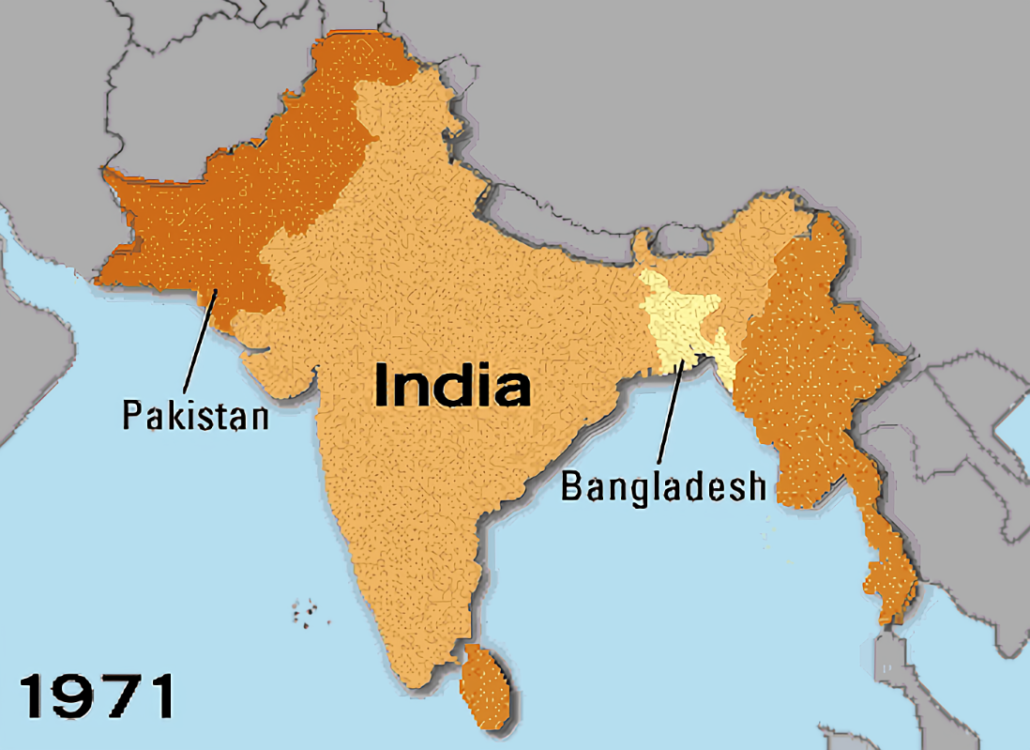India After Gandhi
Author: Ramachandra Guha
Genre: India

India after Gandhi: The History of the World’s Largest Democracy (originally published in 2007, and revised edition in 2017) is the most popular book of Ramachandra Guha, perhaps the most famous Indian historian. Guha, a Padma Bhushan awardee, who has taught at Yale, Stanford and IISc, is one of only 3 Indian historians to have won the foreign member prize by American Historical Association. Foreign Policy magazine named him one of the Top 100 public intellectuals in the world.
This 992-page book, covering India’s political and cultural history since 1947 to 2016, was commissioned by Macmillan and took 10 years of research. The Economist, The Wall Street Journal, and Outlook magazine all voted it Book of the Year.

The book starts with an intriguing chapter Unnatural Nation which itself starts with “Because they are so many, and so various, the people of India are also divided”! It talks of how many regarded independent India doomed for failure since in many ways it was not really a nation. “Scotland is more like Spain than Bengal is like The Punjab” wrote a British historian, adding, “there is not, and never was an India possessing any sort of unity, physical, political, social or religious”.
Churchill said that India was not going to survive after England leaves India: “If the British left, India will fall back quite rapidly through the centuries into the barbarism and privations of the Middle Ages”.
Sure enough, we had our set of challenges. Mahatma Gandhi, the father of the nation, was assassinated just six months after independence. The partition with Pakistan resulted in major clashes between Muslims and Hindus.

But contrary to everyone’s expectations, the situation improved rather quickly and India conducted 17 general elections over the next 70 years without any pause. The last one in 2019 had 67% voter turn-out, the highest ever (and much higher than 46% at independence). The overall voter’s list of 900 million made it the world’s largest election ever. So, India did survive as a thriving democracy after all, in sharp contrast to many of its neighbours – Pakistan, Myanmar, Bangladesh – which had multiple coups and army rules.
One major strength was the value system instilled by India’s founding fathers. Jawaharlal Nehru became the first Prime Minister of India and was a well-educated person from Oxford. Nehru was all about making sure that in a future democracy of more than a billion people, Indian citizens of all denominations would receive the same civil rights. His stance on religious tolerance made Nehru very popular during his administration between 1947 and 1964. The right to vote for women, social programmes to benefit the poor, medical attention, the well-being of the middle class, and giving sanitary living homes to the “untouchables” were some of the changes that Nehru made. In the 1950s, Nehru worked on the first 5-year development plan, where he concentrated on building dams and redistributing land equally among the working class as 60% of GDP was dependent on horticulture. In the next 5-year development plan, he started working towards modernization. All the work resulted in a GDP of 3.6% instead of the targeted 2.1%, and finally India was turning into a modernised economy.

Next, Indira Gandhi became Prime Minister of India for 12 long years. Though she initially proved to a be a good politician, whether negotiating a friendship treaty with Russia or supporting the liberation of Bangladesh, very soon her insecurities made her an authoritarian. She declared a state of emergency for 2 years when she started losing on judicial and mass protests. This period is explained very thoroughly, how the freedom struggle party had degraded into a loyalist, corrupt and slow bureaucracy. How her younger son became an extra constitutional power, and how eventually she was voted out.

The epilogue has come out well. How India survived when many other democracies failed. Some very interesting vignettes like when the first few army chiefs in India tried to assert their independent will, Nehru and Patel politely but firmly handled the situation. Or how when nationalist sentiments after independence suggested that ICS (civil service) be disbanded, Patel pushed for their continuity (despite having been jailed multiple times by the same ICS), because he realized a fledgling nation needed an experienced administrator. Or how when jingoist sentiments were baying for English language to be thrown out of the country, our visionary leaders like Rajagopalachari realized it had a binding affect and acceptability given we had scores of our own languages. And that India’s neighbours lost the plot when they tried to impose one common language (Jinnah went to East Pakistan and exhorted everyone to learn urdu, only to unleash an uprising that soon divided their country). The book, through its decade long research, highlights the contribution of so many people and institutions we had not even heard of. One example is the uniting force of the Indian cinema which effortlessly and engagingly pulls together different languages, religion, and castes and “then sends the synthesized product out for appreciation to the other states of the union.”
India continues to be a rising global power. The author has emphasised that India is able to set its own path to rise rather than copy the West. On the other hand, he also says that there is still lots to be achieved and improved in India. He talks of how rules are not followed in the country, which gives rise to corruption. India being a populist democracy also gives rise to right-wing movements that can be unfair to religious minorities. He ends the book by saying that though he has faith in democratic institutions, democracy in itself does not guarantee anything. His closing comment: “So long as the constitution is not amended beyond recognition, so long as elections are held regularly and fairly and the ethos of secularism broadly prevails, so long as citizens can speak and write in the language of their choosing, so long as there is an integrated market and a moderately efficient civil service and army, and – lest I forget – so long as Hindi films are watched and their songs sung, India will survive.”
Such a vast canvas will have its obvious critics, who are divided whether the author has been totally unbiased or has let his personal admiration of Nehru show in his work. It is a tightrope because everyone will have subjective views.
Why should you read the book: For all the youngsters in India, our history lessons usually end with the British leaving our country. What happened after that is hardly mentioned in textbooks. So, there is a huge gap of almost 70 years in our youth’s knowledge about their own country. This beautiful and insightful narrative fills that void.
Goodreads Link: India After Gandhi: The History of the World’s Largest Democracy by Ramachandra Guha (goodreads.com)

 This information will never be shared with third party
This information will never be shared with third party
Post A Comment
Want to join the discussion?Feel free to contribute!